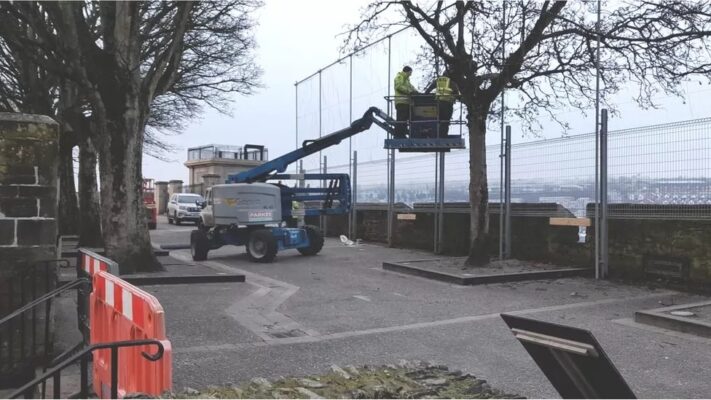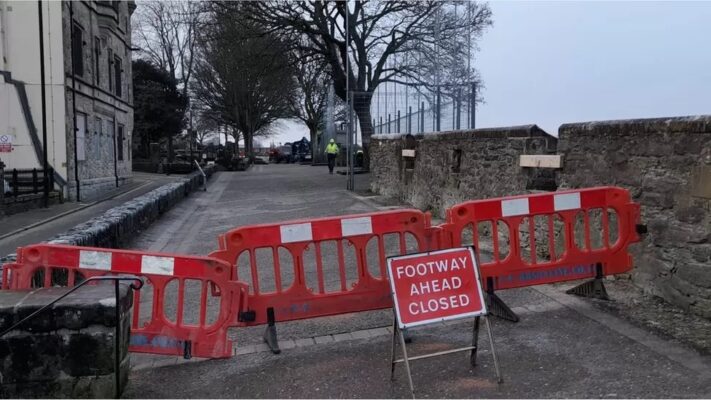
A section of security fencing is to be removed in the coming weeks near Butcher’s Gate and the Royal Bastion section of the walls
The department said it has initiated “a partial interface removal scheme”.
A section of fencing is to be removed in the coming weeks near Butcher’s Gate and the Royal Bastion section of the walls that overlooks the Bogside.
The majority of security gates along Derry’s walls were removed in 2013.
From the late 1960s, during the height of the Troubles, large parts of the walls were inaccessible as a result of being closed off by screens, gates and fences erected at interface areas by the security forces.
Interface areas are the names given to places in Northern Ireland where predominately nationalist and predominantly unionist residential areas meet.
With the easing of violence in Northern Ireland following the signing of the Good Friday Agreement in 1998, public access along the walls was slowly restored and the entire 1.5km circuit was re-opened.
The vast majority of the walls’ 16 security gates and a number of perimeter fencing panels along the walls have since been removed, but some of these structures still remain.
Derry’s Walls, which were built between 1613 and 1619, have become one of the most popular tourist attractions in Northern Ireland.
The fortifications were used as defences for early 17th century settlers from England and Scotland.
The city’s walls were never breached, withstanding several sieges including one in 1689 which lasted 105 days, hence the city’s nickname, the Maiden City.
Derry is the only remaining completely-intact walled city on the island of Ireland and is one of the finest examples of a walled city in Europe.

Removal work is estimated to complete these works in the coming days
The Department for Justice told BBC News NI the move to “remove most of the remaining palisade fencing” along Derry’s Walls comes following “extensive local stakeholder engagement”.
“Our contractors are aiming to complete these works in the coming days,” a department spokesperson said.
“The work has been deliberately timed to limit disruption.”
Tags:




